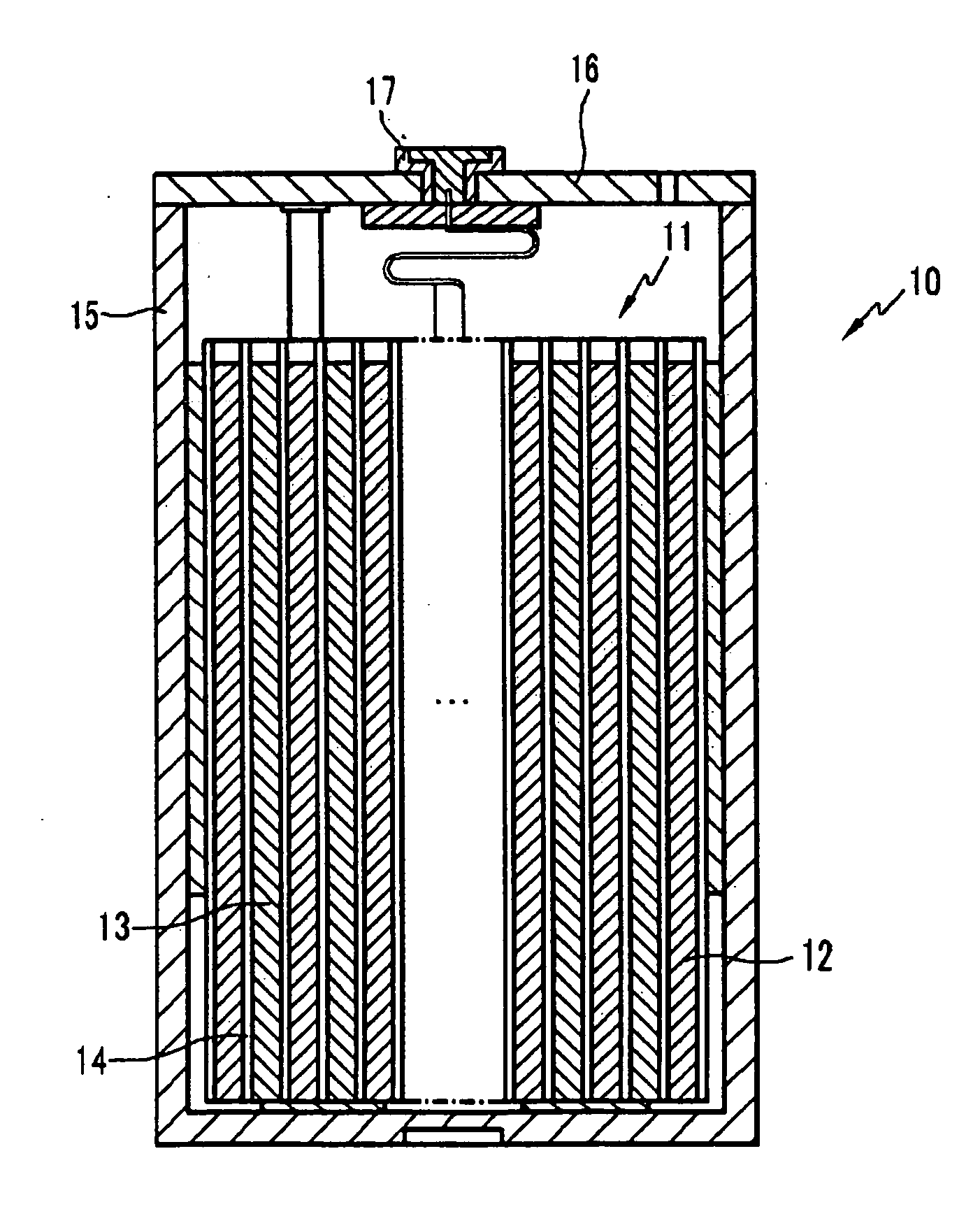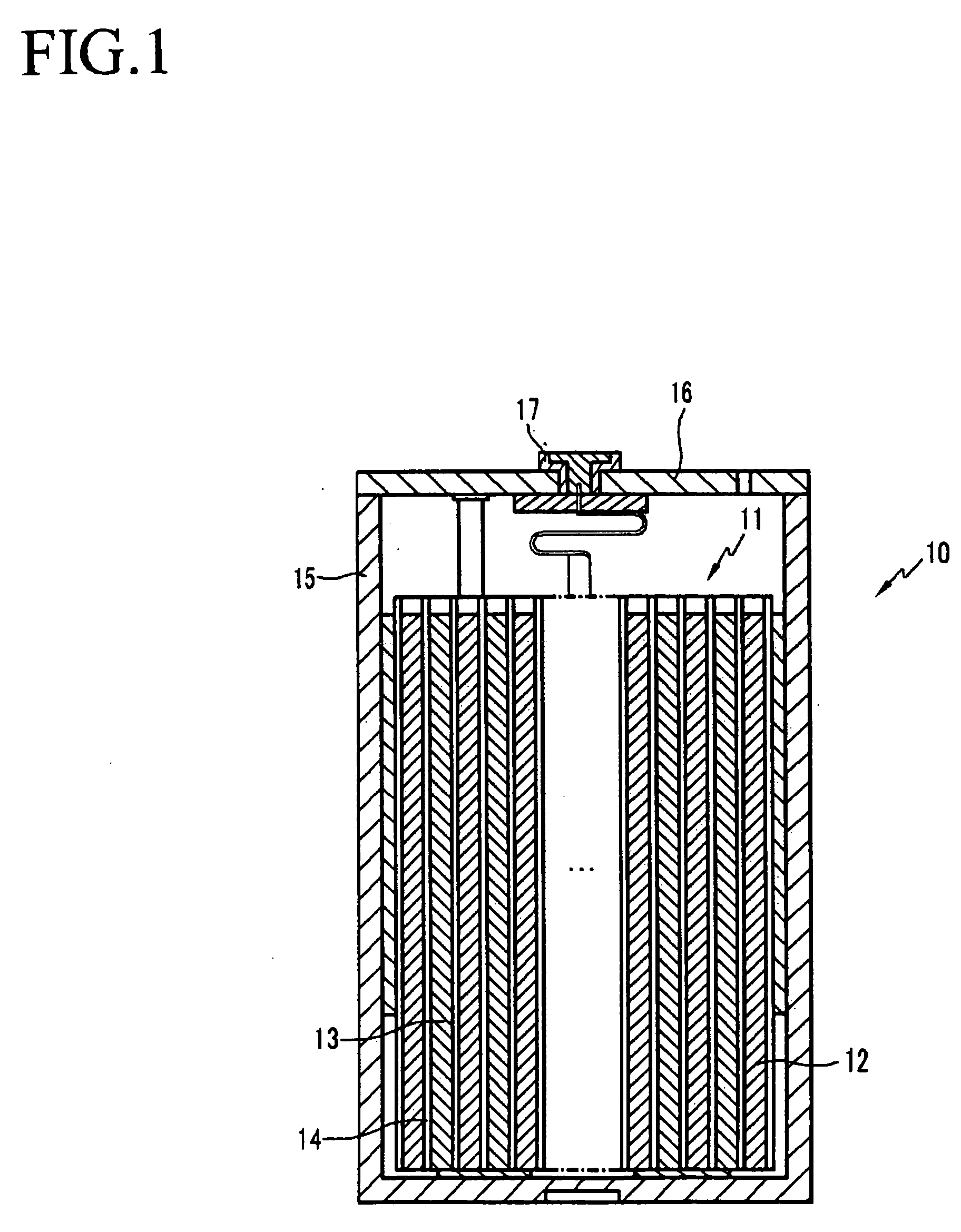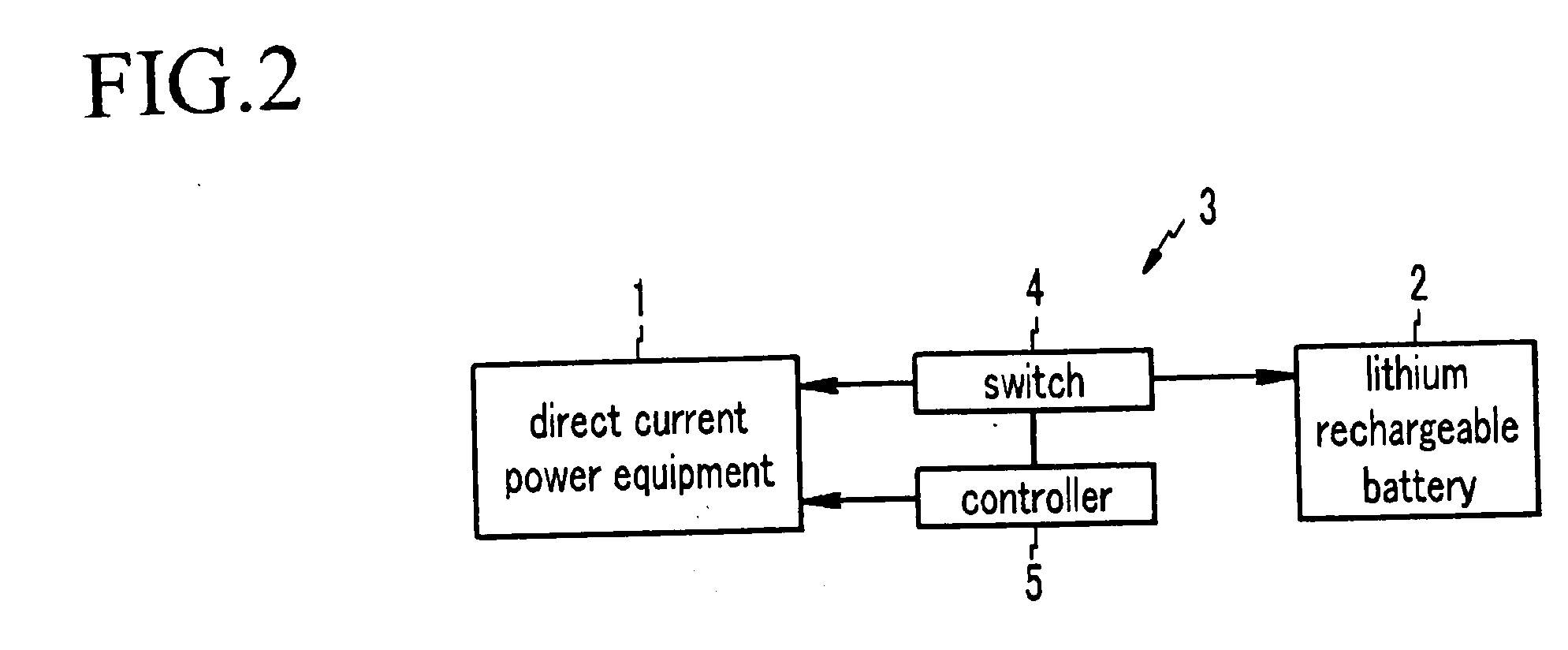Non-aqueous electrolyte, rechargeable lithium battery, and rechargeable battery system
- Summary
- Abstract
- Description
- Claims
- Application Information
AI Technical Summary
Benefits of technology
Problems solved by technology
Method used
Image
Examples
experimental example 1
[0048] A 3-electrode cell was prepared by adding a polymerizable aromatic compound or fluorinated organic compound to a non-aqueous electrolyte. The curved current-voltage line was then measured by a cyclic voltammogram. The reaction potential of the aromatic compound or the fluorinated organic compound was also measured.
[0049] The 3-electrode cell was fabricated by first preparing a working electrode made of a platinum wire having a diameter of 0.5 mm. A counter electrode and reference electrode made of lithium metal were also prepared.
[0050] An electrolyte solution was prepared by mixing LiPF6 to a concentration of 1.3 mol / L to a solvent of ethylene carbonate (EC) and diethyl carbonate (DEC). The ratio of EC to DEC was 30:70. Four different electrolytes were prepared, Examples 1 through 3 and Comparative Example 1.
example 1
[0051] A non-aqueous electrolyte was prepared by adding 0.2-weight % phenanthrene based on 100-weight % of the electrolyte solution.
example 2
[0052] A non-aqueous electrolyte was prepared by adding 0.2-weight % m-terphenyl based on 100-weight % of the electrolyte solution.
PUM
 Login to View More
Login to View More Abstract
Description
Claims
Application Information
 Login to View More
Login to View More - R&D
- Intellectual Property
- Life Sciences
- Materials
- Tech Scout
- Unparalleled Data Quality
- Higher Quality Content
- 60% Fewer Hallucinations
Browse by: Latest US Patents, China's latest patents, Technical Efficacy Thesaurus, Application Domain, Technology Topic, Popular Technical Reports.
© 2025 PatSnap. All rights reserved.Legal|Privacy policy|Modern Slavery Act Transparency Statement|Sitemap|About US| Contact US: help@patsnap.com



